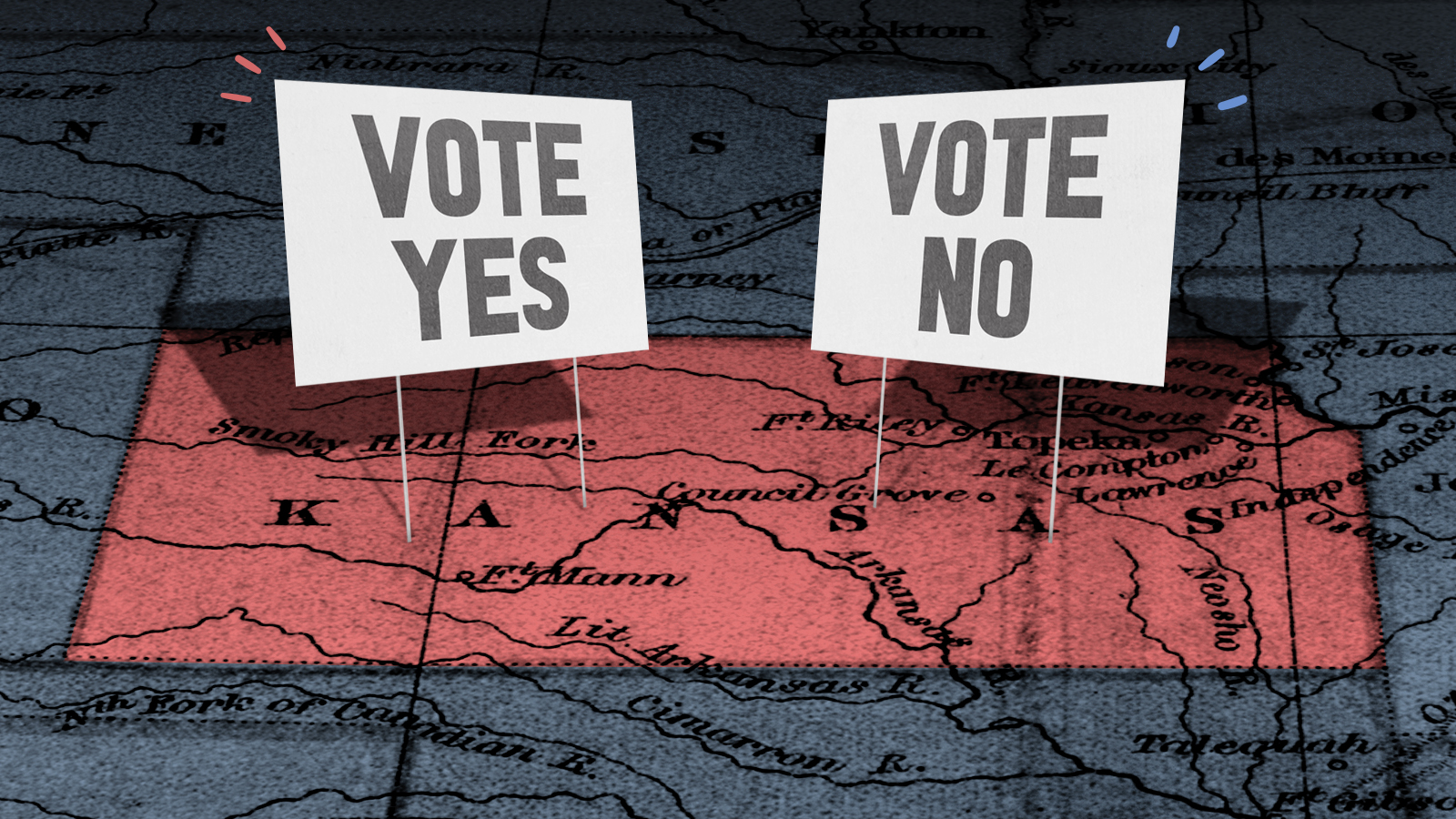The stablecoin cryptocurrency crash, explained
The laws of financial gravity still apply after all


Communities across the U.S. are suffering a brutal summer heatwave, but in the arcane world of decentralized finance (DeFi), "crypto winter" is coming. Maybe.
The most famous cryptocurrency, Bitcoin, has lost two-thirds of its value since hitting a record high last November, and Ethereum is shedding its worth nearly as fast. Celsius Network, one of the largest crypto lenders, unexpectedly paused all withdrawals this week, raising questions about its solvency, and leading crypto exchange Coinbase just announced it is cutting 18 percent of its workforce. Tens of billions of real dollars have gone up in digital smoke.
To some degree, the crash in cryptocurrencies is tied to the sharp drops in stock indexes — investors are shedding their riskier investments, like digital currencies, and fleeing to safer assets, like bonds. And cryptocurrencies are volatile — Bitcoin's recent nosedive is still only "the fourth worst selloff in the cryptocurrency's 13-year history," The Wall Street Journal notes. But this sector-wide crash started with the collapse of a "stablecoin," TerraUSD, or UST.
The Week
Escape your echo chamber. Get the facts behind the news, plus analysis from multiple perspectives.

Sign up for The Week's Free Newsletters
From our morning news briefing to a weekly Good News Newsletter, get the best of The Week delivered directly to your inbox.
From our morning news briefing to a weekly Good News Newsletter, get the best of The Week delivered directly to your inbox.
"You may not have heard of UST before, or know what a stablecoin is, but it's a big deal," Daniel Van Boom writes at CNET. Here's what you need to know:
What is a stablecoin?
A stablecoin is essentially a cryptocurrency that seeks to peg itself to a stable currency, typically the U.S. dollar. Along with TerraUSD, major stablecoins include Tether and USD Coin (USDC). "So if you have 1,000 USDC tokens, for instance, they can at any time be exchanged for $1,000," Van Boom explains.
"Stablecoins are a pillar of crypto's parallel financial system," the Journal says. "Crypto enthusiasts need to maintain a link to the government-backed currencies of traditional finance, where rent is due, cars are bought, and bills are paid. But they want to trade and invest in cryptoland only, not in dollars or euros or pounds. So stablecoins act as a kind of reserve currency, an asset whose value everyone understands — and that shouldn't change." They are, as the name suggests, supposed to be a safe haven in the volatile cryptocurrency marketplace.
How do they work?
Most stablecoins, like Tether and USDC, aim to back up their coins with hard assets, like dollars, gold, or treasuries. Every coin, in theory, is backed up with an equivalent hard asset. "TerraUSD has a more complex approach," the Journal explains. "It's an algorithmic stablecoin that relies on financial engineering to maintain its link to the dollar," with a few billion dollars in Bitcoin reserves as a safety net of last resort.
A free daily email with the biggest news stories of the day – and the best features from TheWeek.com
"A decentralized stablecoin is the Holy Grail of DeFi," Cyrus Younessi, former head of risk management at stablecoin minter MakerDAO, tells CNET. Cryptocurrencies are volatile, but they have the promise of removing currency from oversight by politicians and finance bureaucrats, and "if you could take those assets, extract stability out of them, and productize it, then that's huge," he adds. "But it's not very viable."
Why did TerraUSD collapse?
Basically, there was a run on the bank. Over the course of a weekend in May, there were a series of large withdrawals from Anchor Protocol, a sort of crypto bank set up by TerraUSD creator Terraform Labs for cryptocurrency investors, and that knocked TerraUSD below its $1 peg. That created a downward spiral where investors withdrew their UST coins from Anchor, spooking other investors, who followed suit.
This is how the system was supposed to work, the Journal says. "If TerraUSD's price dips below $1, traders can 'burn' the coin — or permanently remove it from circulation — in exchange for $1 worth of new units of Luna," TerraUSD's sister cryptocurrency, reducing the supply of TerraUSD. Conversely, if TerraUSD climbs above $1, traders can burn Luna and create new TerraUSD," letting the market collectively balance TerraUSD at its assigned peg, the Journal adds. "The system works only if traders actually want Luna. Investors did not want Luna when TerraUSD lost its peg this week. They sold Luna in a panic."
There is also speculation that the large withdrawals that led to the collapse of TerraUSD and Luna were a deliberate attack, possibly to profit from shorting Bitcoin.
Why should you care?
"This matters for three reasons," CNET's Van Boom argues. "First, over $17 billion in crypto value has been wiped out through Luna and UST alone," and their collapse sent shockwaves through the entire crypto industry. "Second, it raises questions about other stablecoins," especially if this was a deliberate, successful attack, he adds. "Last, and possibly most significantly, the collapse of UST has caught the attention of powerful politicians and regulators," meaning dreaded regulation could be on the way.
"The crypto market has matured in recent years, running as a parallel financial system with its own version of banks and lending," the Journal reports. "Yet TerraUSD's plunge raises urgent questions about crypto developers' ambitions to build a new form of finance. It shows that despite the hype, the nascent crypto system is still prone to the kinds of destabilizing bank runs that happen in the nondigital world," and stablecoins aren't immune.
And real people were hurt. "If you're wondering why anyone would tie all their money to an algorithmic stablecoin," so are some of the people who lost money when TerraUSD collapsed, because they didn't know that's where their money was being stored, Marketplace reports.
Steve Insall is "one of nearly 5,000 retail investors who made $47 million in deposits into Stablegains, a now-defunct company that offered a crypto facsimile of a savings account with interest rates up to 15 percent," housed in TerraUSD, Marketplace reports. On a Tuesday in May, Insall "watched his life savings disappear by the second in an app on his phone," trying unsuccessfully "to withdraw anything that remained of the $320,000 balance that was there just days before" while hiding his panic from his wife.
"Many Stablegains users — including bartenders, postal workers, and general contractors — feel they were misled by Stablegains' marketing, which stressed the safety, ease, and promise of decentralized finance," Marketplace adds. The company said it managed its investments in a diversified portfolio, but "if Stablegains users had read the company's Terms of Use, they'd find that Stablegains was generating its high interest rates by depositing funds into Anchor Protocol," and when "Terra crashed, so did Anchor, and down went Stablegains."
"Unfortunately, given this space is so new, there's not a lot of guidance, and people often just reach for the yield and then sometimes are negatively surprised when a problem arises," says Duke finance professor Campbell Harvey. That means there will be ups and downs, "indeed, spectacular ups and downs."
Peter has worked as a news and culture writer and editor at The Week since the site's launch in 2008. He covers politics, world affairs, religion and cultural currents. His journalism career began as a copy editor at a financial newswire and has included editorial positions at The New York Times Magazine, Facts on File, and Oregon State University.
-
 The Week’s big New Year’s Day quiz 2026
The Week’s big New Year’s Day quiz 2026Quiz of the Year How much do you remember about 2025’s headlines? Put yourself to the test with our bumper quiz of the year
-
 Is tanking ruining sports?
Is tanking ruining sports?Today's Big Question The NBA and the NFL want teams to compete to win. What happens if they decide not to?
-
 ‘Netflix needs to not just swallow HBO but also emulate it’
‘Netflix needs to not just swallow HBO but also emulate it’instant opinion Opinion, comment and editorials of the day
-
 Is the Comstock Act back from the dead?
Is the Comstock Act back from the dead?Speed Read How a 19th-century law may end access to the abortion pill
-
 Targeting the press
Targeting the pressSpeed Read Some public officials want to roll back long-standing legal protections for journalists. Might they succeed?
-
 The dangers faced by LGBTQ people in the Middle East
The dangers faced by LGBTQ people in the Middle EastSpeed Read Why do so many Middle Eastern countries have anti-LGBTQ laws, and what can be done to make a change?
-
 Why is Alabama pausing its executions?
Why is Alabama pausing its executions?Speed Read Many states are struggling to carry out the death penalty
-
 Will abortion decide the 2024 presidential race?
Will abortion decide the 2024 presidential race?Speed Read After Dobbs and the midterm elections, the landscape has shifted
-
 The crisis in Haiti, explained
The crisis in Haiti, explainedSpeed Read Calls for foreign intervention have mounted as the island nation's situation has deteriorated
-
 Gorbachev's complicated legacy
Gorbachev's complicated legacySpeed Read The sharpest opinions on the debate from around the web
-
 Kansas' big post-Roe abortion battle
Kansas' big post-Roe abortion battleSpeed Read How did Kansas end up at the center of the abortion fight?
